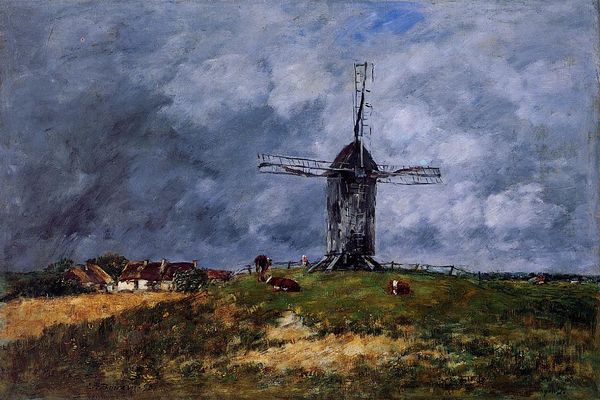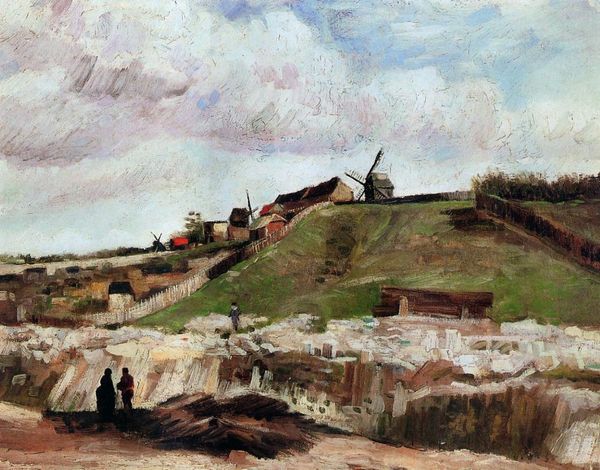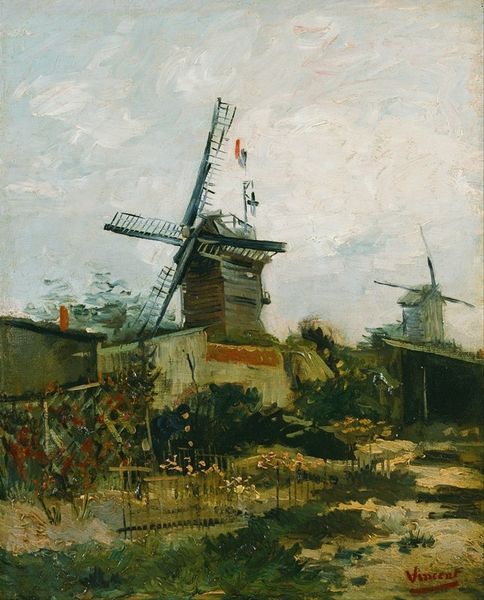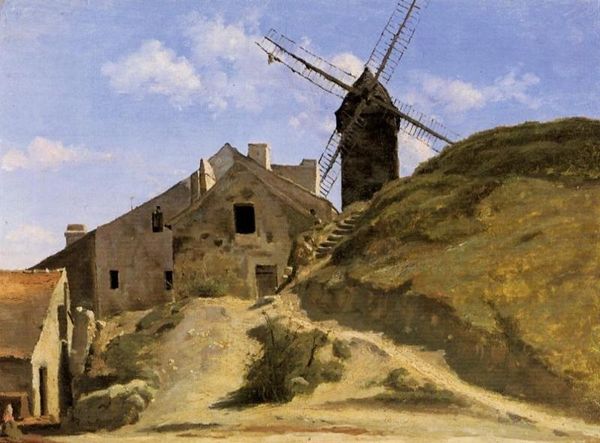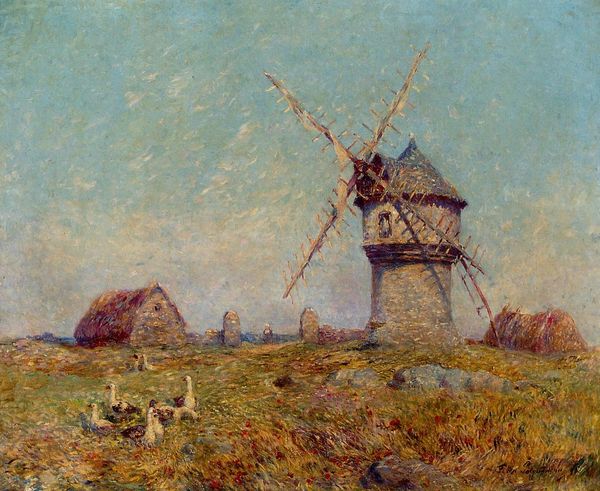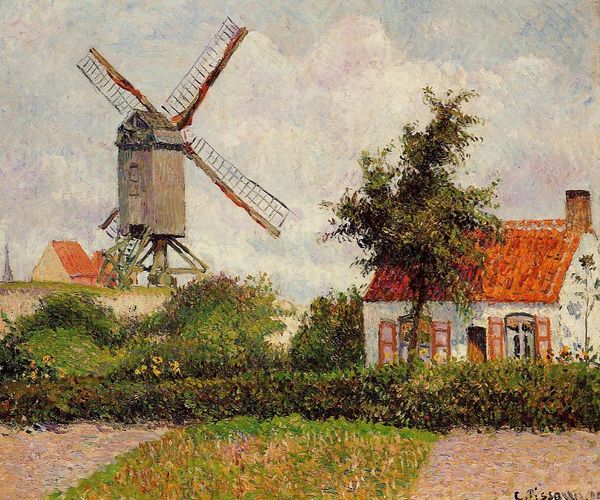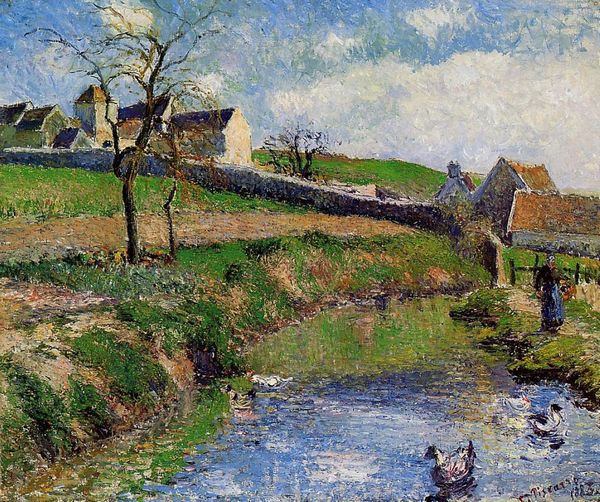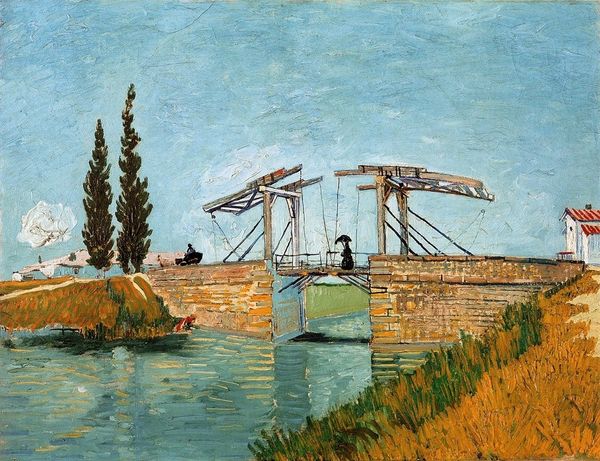
painting, oil-paint
#
painting
#
impressionism
#
landscape
#
oil-paint
#
landscape
#
oil painting
#
cityscape
#
genre-painting
#
post-impressionism
Copyright: Public domain
Curator: Van Gogh's "Le Moulin de la Galette," created in 1887 with oil paints, is fascinating. It’s a vibrant depiction of Montmartre. The thick impasto almost makes it feel like you could reach out and touch the windmill. What strikes you about it? Editor: The landscape is so pastoral and different from my impression of Paris; it seems almost… naïve. What do you see in this painting beyond the beautiful textures? Curator: I see a social commentary. Note the windmill, not as a picturesque element, but as a site of labor. Grain milled there fueled Parisian life, the foundation for consumption. How does Van Gogh portray this "foundation?" Editor: By showing it in the process. The fences suggest boundaries – who is allowed in, who isn’t? Also, he’s downplaying industry to focus on this space…almost like the countryside reclaiming a space that was, in this instance, devoted to it in a roundabout fashion. Curator: Exactly! Van Gogh uses the materiality of paint, the thickness and the strokes themselves, to demonstrate the human exertion embedded in the simplest loaf of bread. The consumption habits in Paris and the modes of production being left in the fields outside city-centers, all materially linked. Doesn’t the roughness of the brushstrokes feel almost… industrial? Editor: It does! The windmill no longer appears pastoral at all, more like a site of intense work – how else would Parisians consume the baked goods produced using it? What could be considered most important from a Materialist perspective? Curator: It’s not simply *what* is depicted, but *how*. The way Van Gogh applied paint serves as a direct translation of labor and consumption, bypassing idealist notions of beauty and truth. Does that perspective shift how you view the painting? Editor: Absolutely. I'm not just seeing a pretty picture anymore, but an illustration of the connection between land and sustenance. It almost anticipates food politics that would come a century later. I see the hard labor that went into making basic material staples that support Paris’ larger cultural landscape. Thanks so much for that insightful analysis. Curator: My pleasure. Recognizing how the medium and technique communicate production changes how we experience art’s message.
Comments
No comments
Be the first to comment and join the conversation on the ultimate creative platform.
